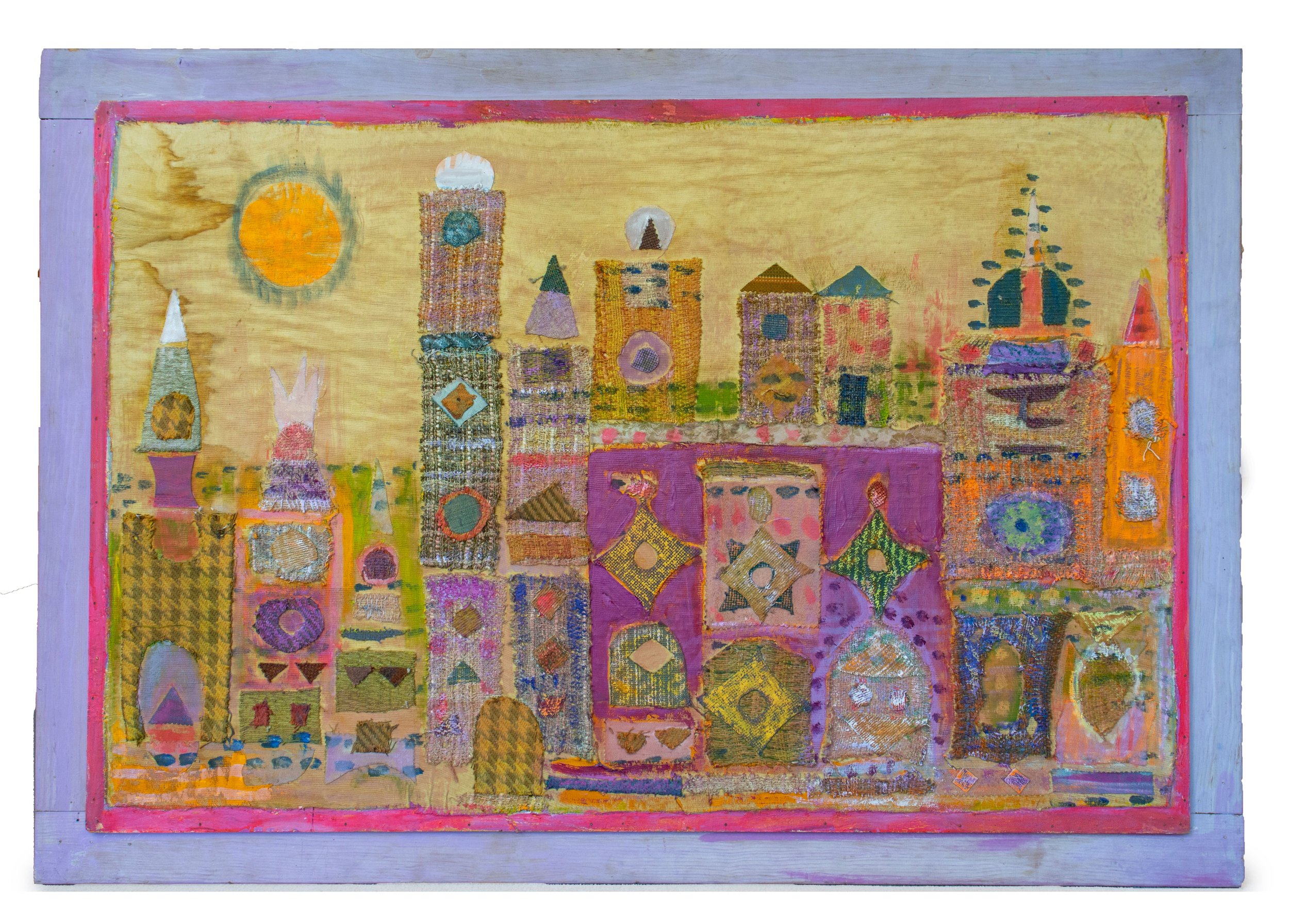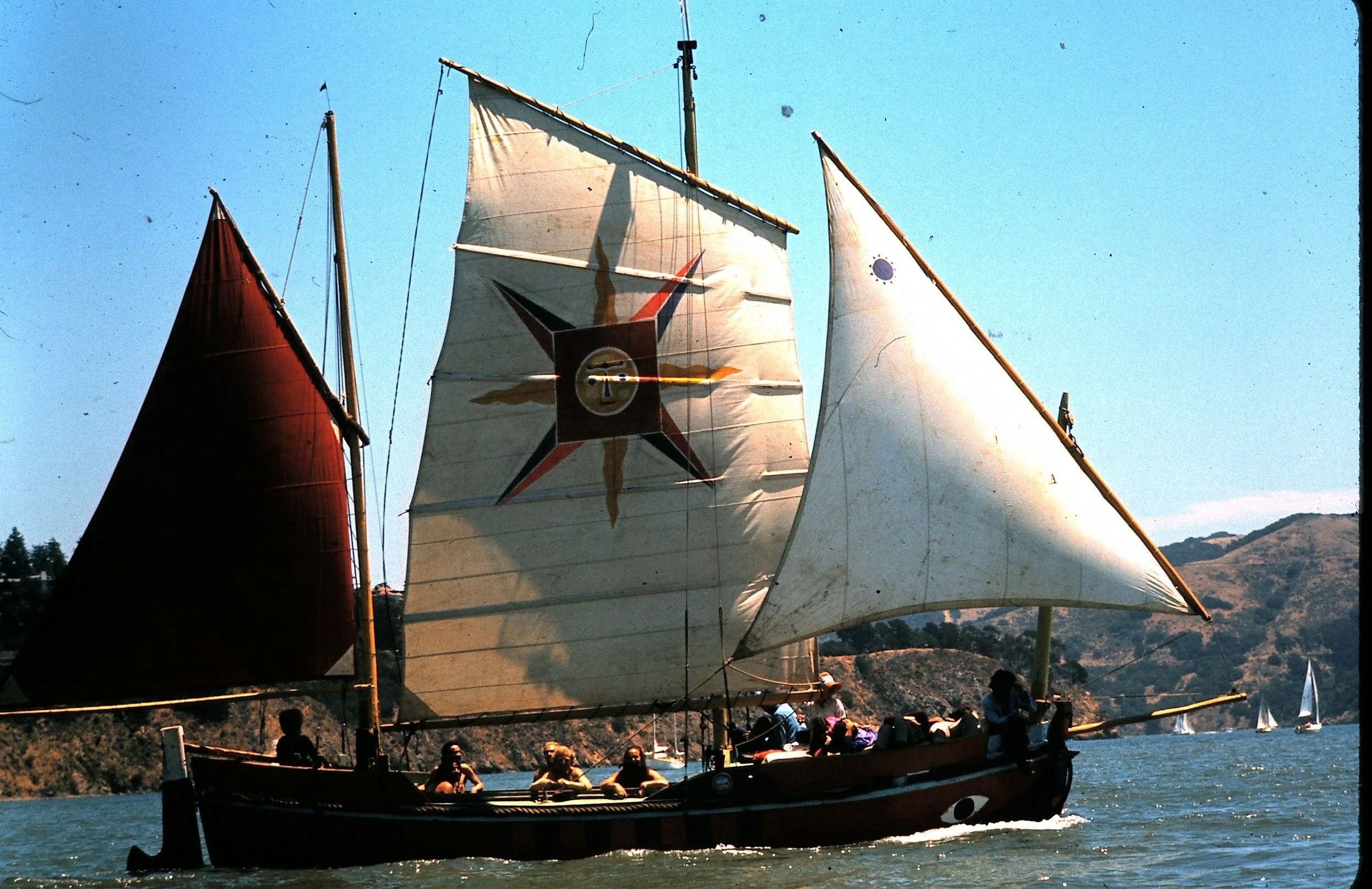Jean Varda: Renaissance Man
Jean Varda’s life seems like something straight out of a movie. Between his famous friends and his propensity to immerse himself in the avant-garde, his biography reads like a history book. One of his own students, Deborah Remington, even said that knowing him was, “like a history book come to life.” Throughout his long life, he was icon wherever he went. Drawing others to him like a magnet, he continues to be remembered for his charisma and his dedication to the purity of art.
Varda traversed the globe, forming connections across the world throughout his life. The artist was of split French and Greek birth, raised in the cosmopolitan city of Smyrna (now Izmir) in Turkey. His father’s name was Michel, and his mother, by some reports, was a Greek mural painter. Over the years, during his wide travels, he earned a reputation as a worldly artist with unheard of connections. It was due to his attitude that he was recognized as, “a man who would always be at home, no matter where he might be.”[i]
Varda first stop along his journey, was to Athens, where he reportedly became a renowned portrait painter, while still a teenager. Knowing he was meant for more; the young artist went to where all the best painters flocked – Paris. In 1914, the City of Lights was home to the most avant-garde and the most cutting-edge artists, as it had been for many decades. Reportedly, it was during this brief period, that Varda met the Pablo Picasso, who told him, “you are an academic painter. You are not a contemporary painter.” That world-shattering review affected Varda for years, all but erasing his interest in painting. Around the same time, the rest of the world was thrown into chaos, with the outbreak of the Great War. Although Varda’s reasons for leaving France may have been more complex than fleeing conscription, the timing of his departure seems not-so-coincidental.
Jean Varda, The Young Artist, c. 1913, oil on canvas, 41 x 33 cm
Varda found a new home during the WWI era in England. When he arrived in London, he still was not painting. Rather, he threw himself (with verifiable skill) into a career as a ballet dancer. His friendship with Margaret Morris, who opened a popular club in Chelsea ensured his rapid integration into the avant-garde society there. Through her, he met the many members of the Bloomsbury Group. Although many of the Bohemians in London at the time were members of the social elite, Varda seamlessly fell in with them without any apparent effort. Varda’s natural charisma and good looks also led him to his first wife, a fellow dancer. Their union was very short, and when he moved back to Paris in 1922, he walked away from her and their daughter.
Early on during his time back in Paris, Varda met Roland Penrose. Together they would visit Montmartre to see Demetrios Galanis and Georges Braque. Quickly, Penrose and Varda decided to leave the urban setting, and they settled on buying a house in the small fishing village, Cassis on the south coast of France. Over the next 10 years, all kinds of famous people would visit Varda and his social network continued to expand to include the leading avant-garde artists and writers in Europe. He gained a wide-spread reputation for hosting the wildest costume parties.
During that inter-war period, Varda finally returned to art making. He had adopted an entirely new medium and technique, abandoning painting. He exhibited his mosaics (made from broken pieces of glass and mirrors) across the continent, earning wide acclaim for his novel approach. During that period, largely due to his deep friendship with Roland Penrose, Varda was included in the 1st International Surrealist Exhibition of 1936.
Jean Varda, Mount Athos, c. 1939, paint, plaster and glass on panel, 56.5 x 43 cm
Around the outbreak of WWII, Varda earned his first exhibition in the United States, at a gallery in New York. Evading the impending doom, he soon found a new, adoring audience in America. While his whole first show sold out, he tired of the bustle of New York City. In seeking out a similar tranquility as his beloved village on the Mediterranean, Cassis, Varda came to settle in the burgeoning Bohemian community in Big Sur. Shortly after moving there, he sent a letter to one of his favorite authors, Henry Miller. The two met shortly after, and charmed by Varda’s descriptions of California coast, Miller himself moved to the area. Varda’s wild Monterey period, when he built his famous Big Red Barn, was replete with more raucous costume parties, as his cohort grew to include other prominent social figures like Anaïs Nin, Dr. Ed Ricketts, and John Steinbeck. That most famous author of Monterey, wrote his ode to the fishing town, and featured a chapter about the colorful, fictional artist, Henri, who happened to share several similarities with the very real Varda.
Exhibition Announcement from Varda's first exhibition
Eventually, Varda’s time in Monterey drew to a close. Drawn to yet another avant-garde center, he accepted a position teaching at the revolutionary Black Mountain College summer program in 1946. He quickly earned the title as one of the most memorable teachers that summer, remembered by Jacob Lawrence for his antics. The Greek Party he helped to organize remained so famous that it inspired students, generations later, to remake his famous Trojan Horse sculpture.
Red Barn in Monterey, California
When Varda returned to California, he was eager to continue his teaching pursuits, and he quickly found a job at the California School of Fine Arts (later the San Francisco Art Institute). Teaching a variety of classes there for the next 10 years, he taught his students about the art of collage, color theory, and composition. Varda’s time teaching at the CSFA coincided with the explosive growth of the Beat movement. Stretching across both visual arts and the literary arts, the movement largely defined the 1950s and even 1960s in San Francisco. He taught five of the six founding members of the 6 Gallery and he was remembered for showing others how to bring artwork outside of the classroom, and how to live freely.
Varda was perhaps best remembered for his famous houseboat, the S.S. Vallego. He first shared it with the painter, and important Surrealist/Dynaton artist, Gordon Onslow Ford. Later, the Zen master, Alan Watts, joined Varda aboard the boat. The famous houseboat community, which still remains a hallmark of Sausalito, grew around the S.S. Vallejo. Although not the first residence on the water, Varda’s open-house policy drew others to the small coastal city, which grew over time. The parties there were just as famous, and the specific area, known as Gate 5, was nicknamed as “Guru Alley” for the famous thinkers, writers, artists, and socialites that visited. One such visitor was Maya Angelou, who wrote fondly about her time with Varda and his famous cohorts.
Jean Varda, Untitled (Celestial City), c. 1950s, mixed media, 53 x 37 inches
By the 1950s, Varda had shifted his focus onto collages, rather than mosaics. Using any kind of scrap material that he could find, the artist would assemble elegant and aesthetic images of women and celestial cities, using the golden hues of the icons of his youthful days in Byzantine churches. Even as one of the most social creatures of his time, he found time to produce a sizeable oeuvre, explaining that it was important to finish a new collage every day. He did not slow down until his death in 1971, and up until that moment he continued to entertain friends, earning the title as King of the Hippies. His famous sailboats hosted just as many of the famous parties as his more permanent abode, and all kinds of celebrities sailed on the Bay with him.
Jean Varda's sailboat, The Cythera
As Knute Stiles, writer for Artforum, best put it, “Varda’s pictures are rumored to be magical: if hung in a room they are supposed to inspire geniality and affection.” As Henry Miller extolled in his “Master Building” article, “It is [Varda’s] special quality to see always the potential, and often quite invisible, nature of his friends. He sees them as only the saint or the guru sees human kind. Sees them thus because he himself is all these things, because in the gleam of his powerful, radiant light even the dull flesh of the inconspicuous creature, be it human or animal, reflect his faith and ardor.” Magic, geniality, and affection remain Varda’s lasting legacy.
Written by Sarah Poisner, author of Jean Varda: Renaissance Man. The book is now available in soft and hardcover through the John Natsoulas Gallery. An exhibition of the same name is open at the Beat Museum in San Francisco, and it will be on view until October 31, 2024.
[i] Monique Benoit, “Monique’s Daily Male: A Painter Who Cries, ‘Attack, Attack, Attack,’” San Francisco Chronicle, 20 March 1962: 18.






